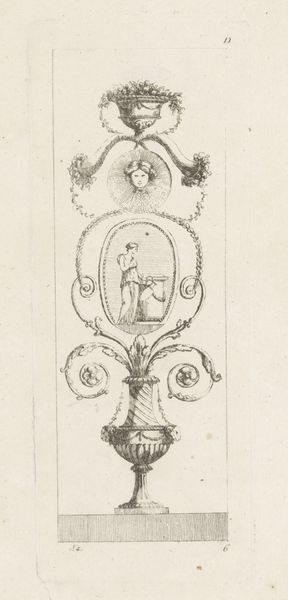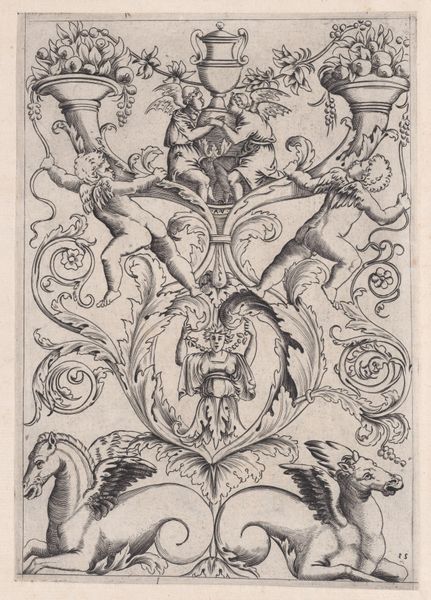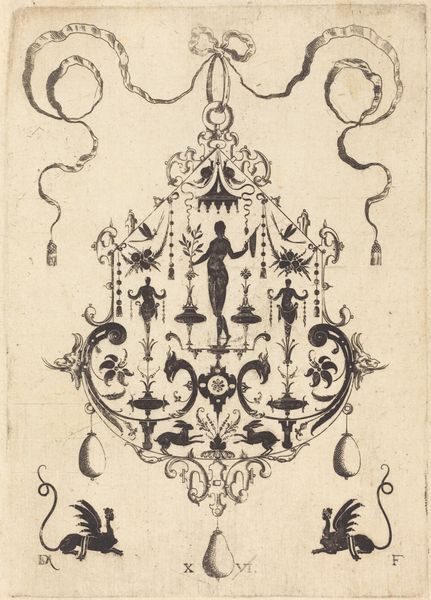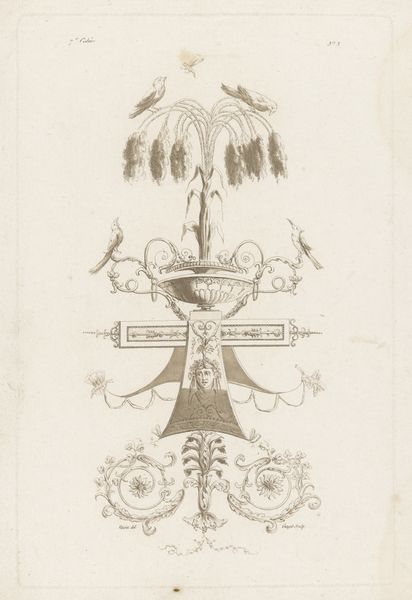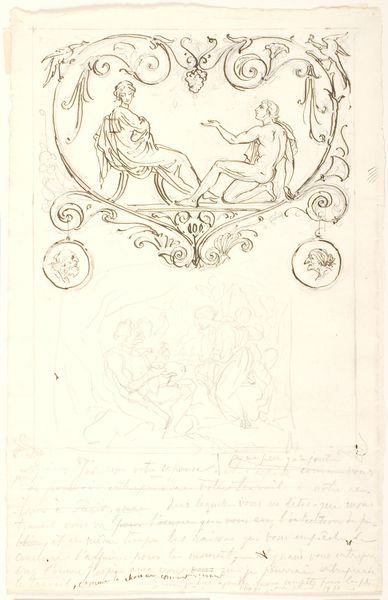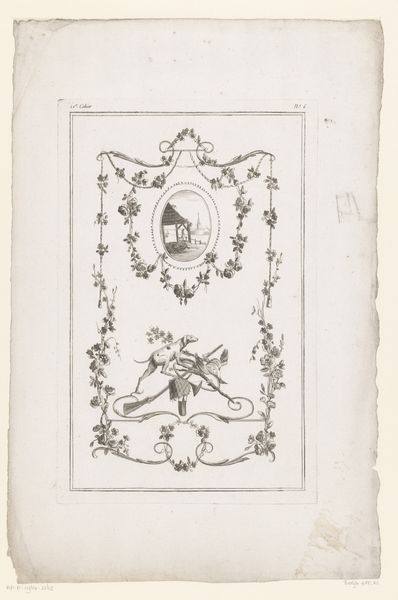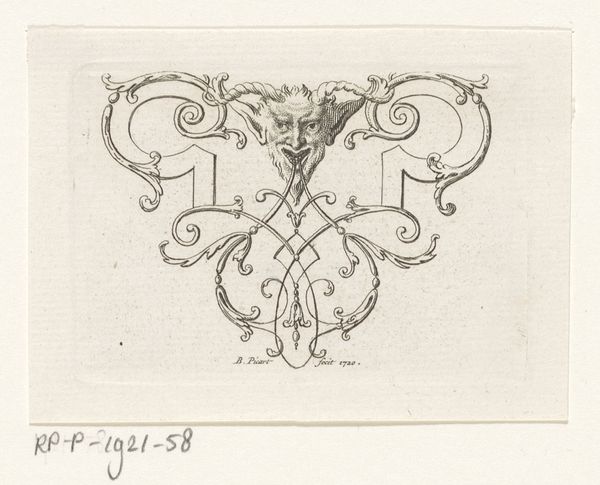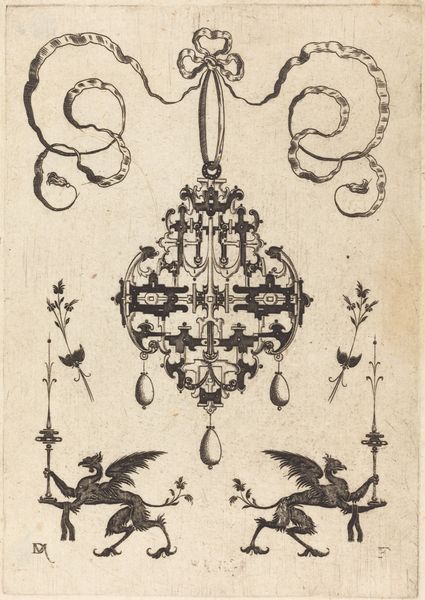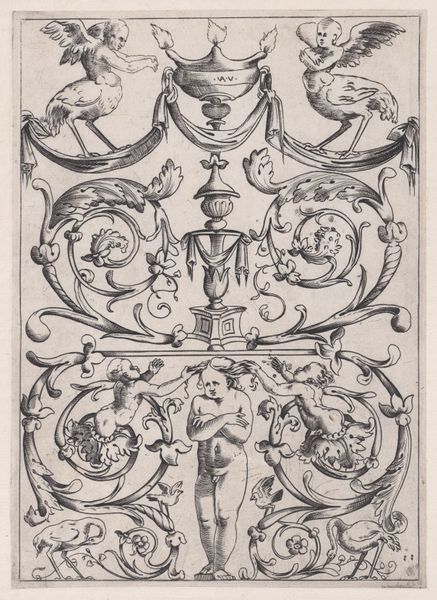
drawing, print, engraving
#
drawing
#
neoclacissism
#
light pencil work
#
quirky sketch
#
allegory
# print
#
pencil sketch
#
old engraving style
#
figuration
#
form
#
personal sketchbook
#
ink drawing experimentation
#
pen-ink sketch
#
line
#
sketchbook drawing
#
pencil work
#
sketchbook art
#
engraving
Dimensions: height 285 mm, width 210 mm
Copyright: Rijks Museum: Open Domain
Curator: This intricate drawing is titled "Arabesk met engel en vrouw," created around 1788. It's currently held in the Rijksmuseum. What's your first impression? Editor: It's quite charming, with an old engraving style aesthetic. The overall feeling is one of delicate balance. It gives me sketchbook art vibes. Curator: Indeed. These arabesques were often produced as engravings and exemplify Neoclassical tastes. Given its light pencil work, it has been noted as experimentation in ink drawing. Think of the socio-political climate in Europe back then and this pursuit of beauty can be a very politically-engaged gesture. Editor: It is important to note that it comes at a pivotal moment when definitions of womanhood were being both challenged and rigidly policed. A certain form of domestic femininity was considered crucial to nation-building. Looking at it today through a feminist lens, I'm curious about the role and portrayal of the female figure amidst those arabesques. Curator: Good point. It raises important questions about power, representation, and perhaps resistance. This angel and woman image fits within established visual traditions while offering room for interpretation and agency. How was art seen politically? Editor: Exactly. This also fits into a moment of visual language in service of specific social narratives. Who got to tell the stories through these drawings, who consumed them, and to what ends? Even a "simple" design for ornament in a domestic space participated in constructing the social and political landscape. The figure within seems idealized but what do you think of its social intention? Curator: We are left to grapple with the social intentions and interpret these objects based on available evidence. However, by bringing contemporary theories, we enable a deeper dialogue and expose its nuanced role within these histories. Editor: Absolutely. Recognizing the tensions in artmaking helps us see the past with clearer eyes and makes room to question our present too. Curator: Indeed. A great moment to look at this personal sketchbook more broadly, within its era. Editor: Definitely given me pause, plenty to consider about those sketchbook drawings and gender roles of the day!
Comments
No comments
Be the first to comment and join the conversation on the ultimate creative platform.
